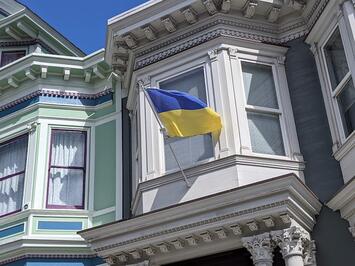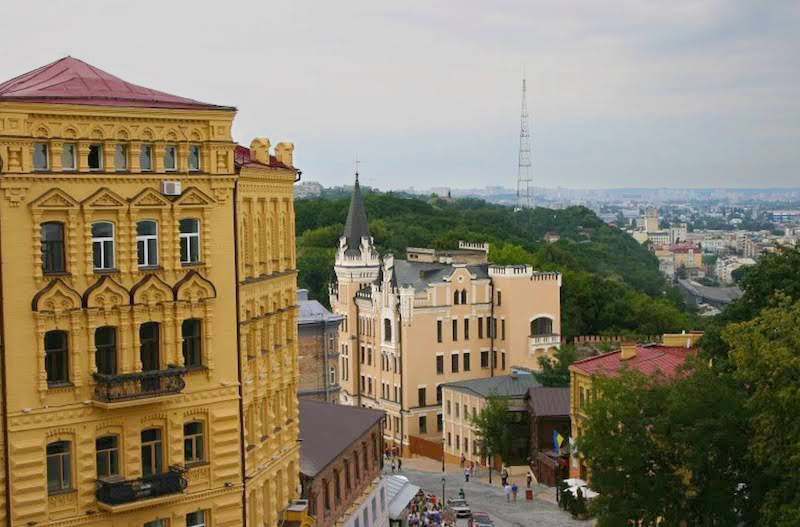
A flurry of Ukrainian flags appeared all over San Francisco a year ago when Russia’s incremental acquisition of Ukrainian territory ramped up in earnest and turned to a hot war. It was a show of solidarity - what is sometimes called raising awareness. There were so many of these flags they displaced the Black Lives Matter signs in many windows. (I’m rolling my eyes.) These flags weren’t doing anyone in Ukraine any good. If you feel strongly about something it’s perfectly fine to let your neighbors know. But if you’re serious you need to take meaningful action as well. Otherwise you’re just moralizing and flattering yourself. And no, that $5 donation to an online charity doesn’t count.
I have a longstanding attachment to Eastern Europe. When the Berlin Wall fell in 1989 I was one of those kids who filled a duffel bag with Levis, got a cheap flight to Helsinki, and trekked from Leningrad to Moscow. I lived with a series of Russian families along the way and got an up close and personal view of the Soviet Union just as it was coming unglued. At the time it was unclear what would happen after communism. Many of those Russian families made the difficult decision to immigrate to Western Europe, North America, Australia, or Israel. Others stayed and took their chances in their homeland as things wobbled.
Other trips to the Baltic Republics and Ukraine followed over the decades. I like the people, the culture, the great food, and natural beauty of the land. It’s an undervalued part of the world. The region is also full of time capsules of past experiments for someone who’s interested in architecture, land use, and urban form. A czarist palace might sit near a communist era khrushchoba apartment block, new construction luxury condos, and a suburban big box store. It’s a layer cake of geopolitics made solid in brick, steel and concrete.

The scars of past wars are evident, along with new interpretations of who did what to whom and why. Ukraine, as its ancient name implies, has aways been a borderland squeezed on all sides by aggressive neighbors. It’s a tempting bread basket offering lebensraum and a buffer zone against military advances from whoever is on the other side. Occupation, famine, and death is the usual result for the locals.
Unsurprisingly, Ukrainians are xenophobic by nature and more than a little prejudiced against people they feel don’t belong. Anti-immigrant sentiments are always high. Ukrainians have had a bone to pick with Jews, Greeks, Catholics, and Armenians for centuries with regular purges. The Nazis didn’t exterminate the “undesirables” of Ukraine so much as they gave the green light to the locals who were not all that sad to see the riffraff done away with. You can say the same about Lithuanians, Poles, and even the French. America closed its doors to select refugees before and during World War II and sent people back to their deaths. These are unfashionable statements, but it doesn’t make the underlying reality any less true.
Read the rest of this piece at Granola Shotgun.
Johnny Sanphillippo is an amateur architecture buff with a passionate interest in where and how we all live and occupy the landscape, from small rural towns to skyscrapers and everything in between. He travels often, conducts interviews with people of interest, and gathers photos and video of places worth talking about (which he often shares on Strong Towns). Johnny writes for Strong Towns, and his blog, Granola Shotgun.
Photos: by the author.












